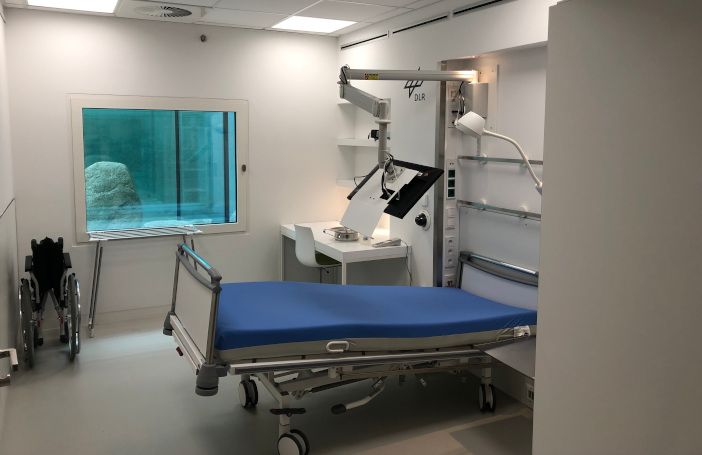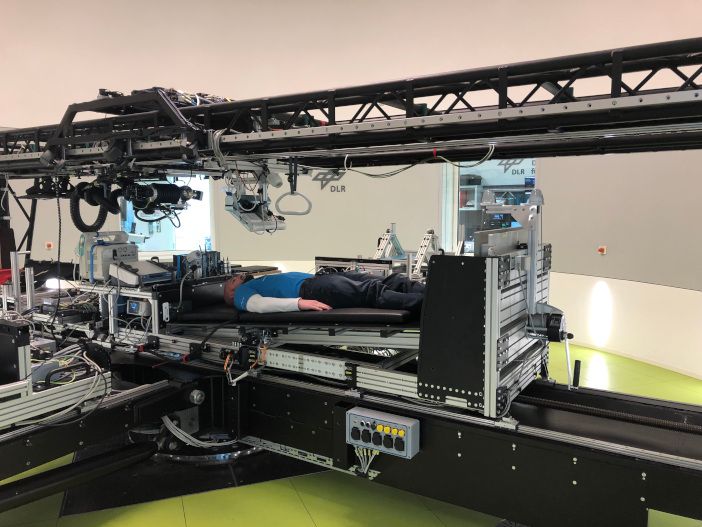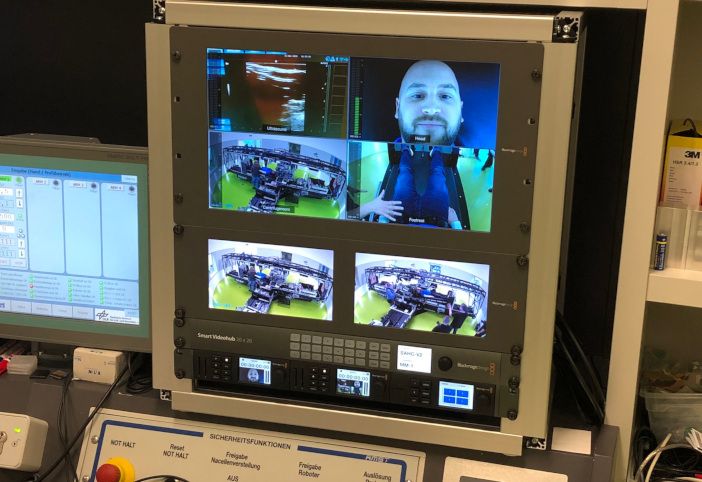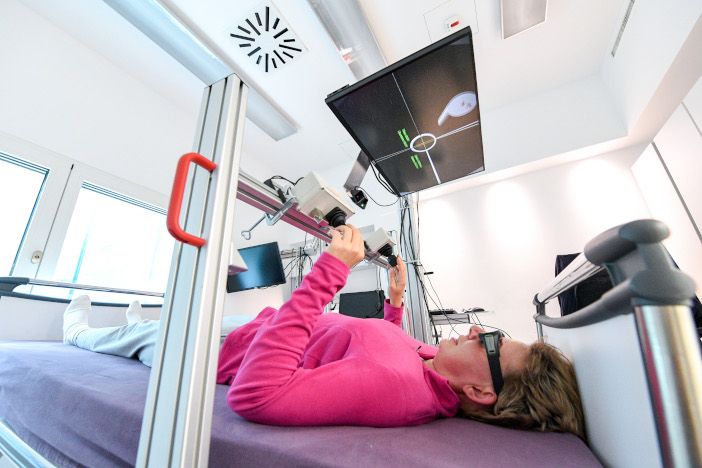A bedrest study launched last month at ESA’s :envihab center in Cologne, Germany is investigating how astronauts can stay healthy while experiencing extended periods of weightlessness.
The joint ESA-NASA study, which launched on the 25 March 2019, is running for 90 days. For 60 of these days the 12 male and 12 female test subjects will remain in beds with the heads tilted 6˚ below horizontal and one shoulder touching the bed, to simulate the microgravity of space.
As blood flows to the participants’ heads and muscle is lost from underuse, researchers will set the subjects tasks and assess their performance. Activities such as a virtual reality spacecraft docking simulation will better help researchers understand the physical and cognitive effects of microgravity-like conditions and enable them to test techniques to try and combat the effects, using things such as diet to physical exercise.

Bedrest has long been used to mimic some of the changes the human body experiences in the weightlessness of space. But this bedrest study is the first of its kind to be conducted in partnership between ESA and NASA.It is also the first to employ DLR’s short-arm centrifuge as a way of recreating different gravity levels for participants. Once a day, some of the participants will lie in DLR’s short-arm centrifuge where they will be spun to encourage blood to flow back towards their feet.
The intensity of the centrifugal force is being adapted to each person according to their size. DLR is also adjusting the centre of spin so that subjects are spun around their heads or their chests to assess this variables consequences for rehabilitation.

Several experiments will be carried out over the course of the study, looking at cardiovascular function, balance and muscle strength, metabolism and cognitive performance among other factors.
The ESA’s team leader for the research, Jennifer Ngo-Anh, said, “To make long missions possible, various risks to astronaut health must be minimized. This study allows us to address the issue of muscular atrophy caused by weightlessness, but also other stressors such as cosmic radiation, isolation and spatial restrictions.”






